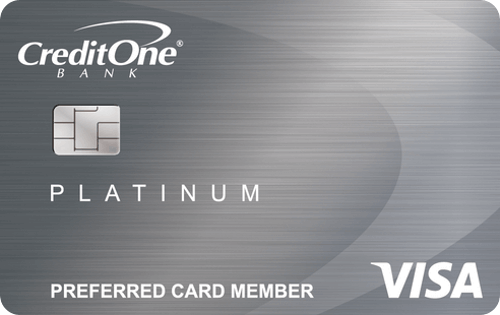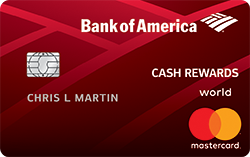In order to determine the best credit cards for each category we considered the costs and benefits of each credit card. Costs of each credit card include: the annual fee, foreign transaction fee and the required spend to qualify for the welcome offer. Benefits include the welcome offer, cash rewards or other rewards, bonus category offers, balance transfer offers, status benefits and other perks.
In addition, each category of credit card had its own criteria. For travel rewards cards we also evaluated the value of miles or points per brand based on how many miles or points are earned and how much they are worth when redeemed.
Frequently Asked Questions
What is the best credit card overall?
The best overall credit card depends on what your goals are and how you spend money, so the best card isn’t likely to be the same from person to person.
That said, the Citi Double Cash credit card takes our spot for the best credit card overall and it’s a good starting point for most people. The card earns an unlimited 2% cashback on all purchases, provides a 0% introductory APR for 18 months on balance transfers (balance transfer fee applies, after 18 months standard purchase APR applies), and doesn’t have an annual fee.
The card’s 2% cashback rewards structure (1% when you make a purchase and 1% when you pay your card off) makes this card one of the top cashback credit cards on the market. For those who pay virtually every expense with the card, the effective 2% cashback can generate $1,000 or more a year in rewards, according to Forbes’ review.
Keep in mind, there are other cards on the market catering to different needs. Though the Citi Double Cash credit card offers an excellent rate on cashback rewards, there are better credit cards on the market for, say, travel lovers. For this reason, make sure to understand what type of rewards you are most interested in, and consider credit card offerings accordingly. The Citi Double Cash credit card provides excellent value for everyday use.
What credit score do you need to get a top credit card?
Plan to have a good to excellent credit score to get approved for most of the top credit cards on the market. Although there are no hard rules on which score qualifies and disqualifies an applicant, a safe rule of thumb is to have a score above 700. This is considered a good credit score according to Experian, a consumer credit reporting company.
Top credit cards, such as the American Express Gold card, the Chase Sapphire Reserve card, or the Citi Double Cash card, generally require users to have good to excellent credit.
Card holders with scores below 700 should make sure to pay off their balance on time monthly, keep credit utilization low and maintain a history of responsible credit use in order to raise that score as soon as possible.
How many credit cards should you have?
First and foremost, make sure you are already responsibly paying the balance on your first credit card before moving on to expanding to more cards. More cards will add more complexity to your financial life, so it’s good to increase your responsibility slowly.
Keep in mind that applying for a new credit card will temporarily drop your credit score, so applying to multiple cards at the same time is generally not a smart move. If you are already a responsible credit card user, adding a second or third credit card to take advantage of multiple rewards is definitely the next step in your personal finance journey.
There is no exact maximum number of credit cards you should have, as everyone’s spending habits and needs are different. Someone with a 10-year history building credit will likely have more credit cards than someone just starting to build credit.
A smart move is to pick cards from different popular networks, such as Mastercard or Visa. This is optional, but it’s smart to have both a Mastercard and a Visa in your arsenal. Some locations around the world accept Visas much more frequently than Mastercards, while networks such as Discover are much less accepted.
How do you pick the best credit card for your specific needs?
The most simple way is to create your personalized budget so you can see exactly what are your spending habits. There are several apps that can streamline this process for you.
Knowing the above data, you can select the card which best aligns with your spending habits. Spend a lot on groceries? Look for cards with excellent rewards on grocery purchases. Spend a lot at the pump? Look for cards with top notch rewards on gas. Next, calculate your rewards potential, so you’ll know exactly how beneficial that card will be for you.
Keep tabs on some additional card benefits, such as warranties, trip cancellation insurance and even price protection.
What’s the best first credit card to get?
The best first credit card to get will be the one to start building your credit history. Don’t focus on travel rewards or cash back rates, these will come later. Instead, pick a starter card, and responsibly handle the card until your credit score improves to move on to a better credit card.
What are the types of credit cards available?
There are the many different types of credit cards available on the market to choose from.
Secured credit cards: A secured credit card is intended for a user with bad credit or a short credit history. Users deposit cash in return for credit limit. After some months, if used responsibly, users can then switch to an unsecured credit card, which does not require an upfront deposit.
Student credit cards: Student credit cards are intended for users just starting to build credit. The card generally has an educational reward, such as a statement credit if the student maintains or exceeds a certain GPA.
Business credit cards: Business credit cards are split into small business and corporate credit cards. Large business with an established credit history will opt for a corporate credit card, while newer businesses with a short credit history will use the small business credit card.
Cash back credit cards: Cash back credit cards give users cash rewards after certain purchases, typically within a one to five percent range, depending on the card. These cards also reward purchases in certain categories differently, such as restaurants, groceries, gas, etc. Users should match these cards’ rewards to align with their spending habits.
Travel rewards credit cards: Travel reward credit cards are great options for users looking to save on airline purchases and hotel stays. Users earn mileage after purchases, which can add up to significant savings on travel related purchases. As always, compare the different travel reward cards to see which option best suits your goals.
Brand credit cards: Store cards such as Target’s RedCard, Starbucks Rewards Visa Credit Card or Amazon Prime Rewards Visa Signature may provide some benefits for these brand enthusiasts. Still, make sure to calculate your own personal rewards potential to see if having these cards is truly worth it, as most users will find these cards generally do not provide as much upside compared to other types of credit cards.
0% intro APR and balance transfer credit cards: Some cards offer a 0% introductory APR, meaning consumers pay no interest on their balance during the introductory period. Once this intro period expires, the APR will go back to the original rate listed in the fine print. Keep in mind, users might still have to pay a balance transfer fee, which is typically in the range of three percent to five percent of the amount transferred.
Hey this is Uday Test Question
Hey Uday, this is the answer.
For cards meant for those who are trying to build credit or improve their credit score we focused on credit card offers that offer the most opportunities to improve your credit for the lowest net cost.
For business credit card offers we evaluated the earnings across categories in relation to the annual fee.
For balance transfer cards we looked at the length of 0% APR and the variable APR after the bonus period ended.





